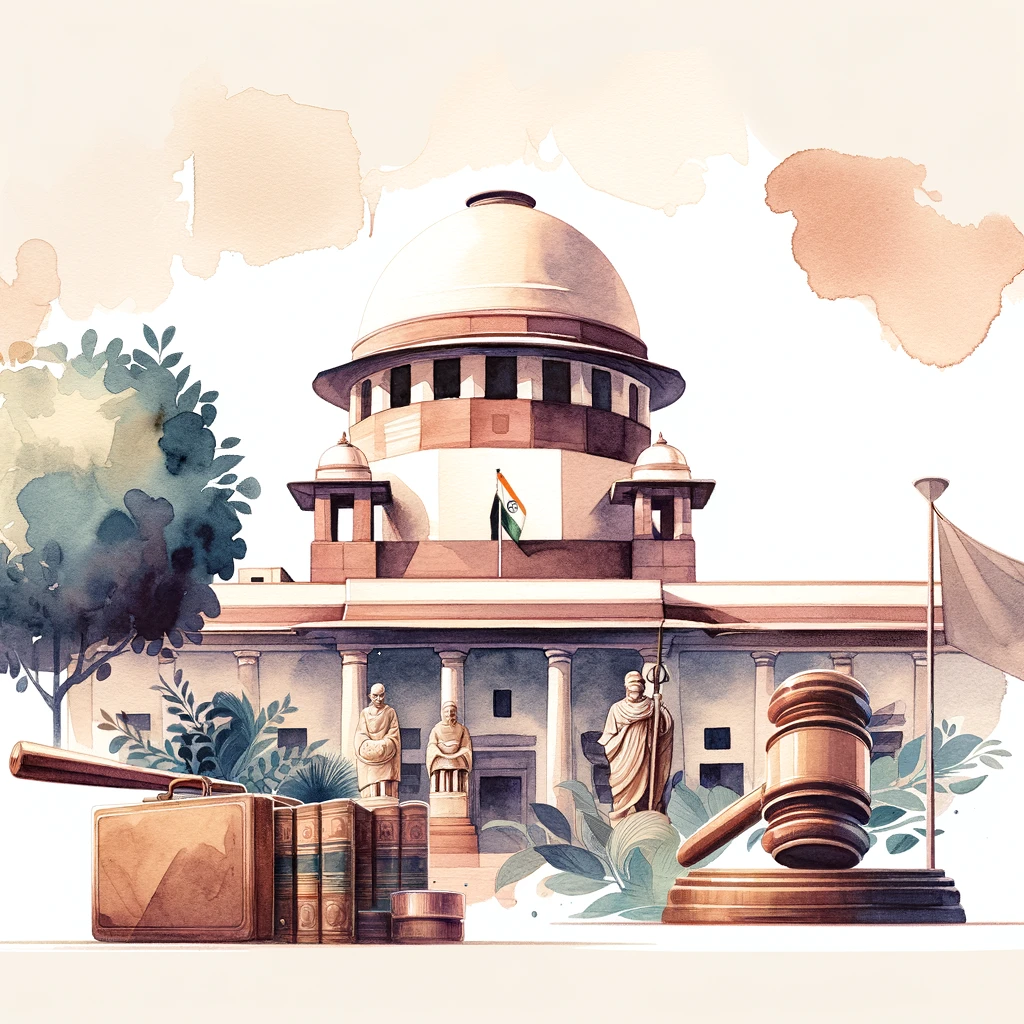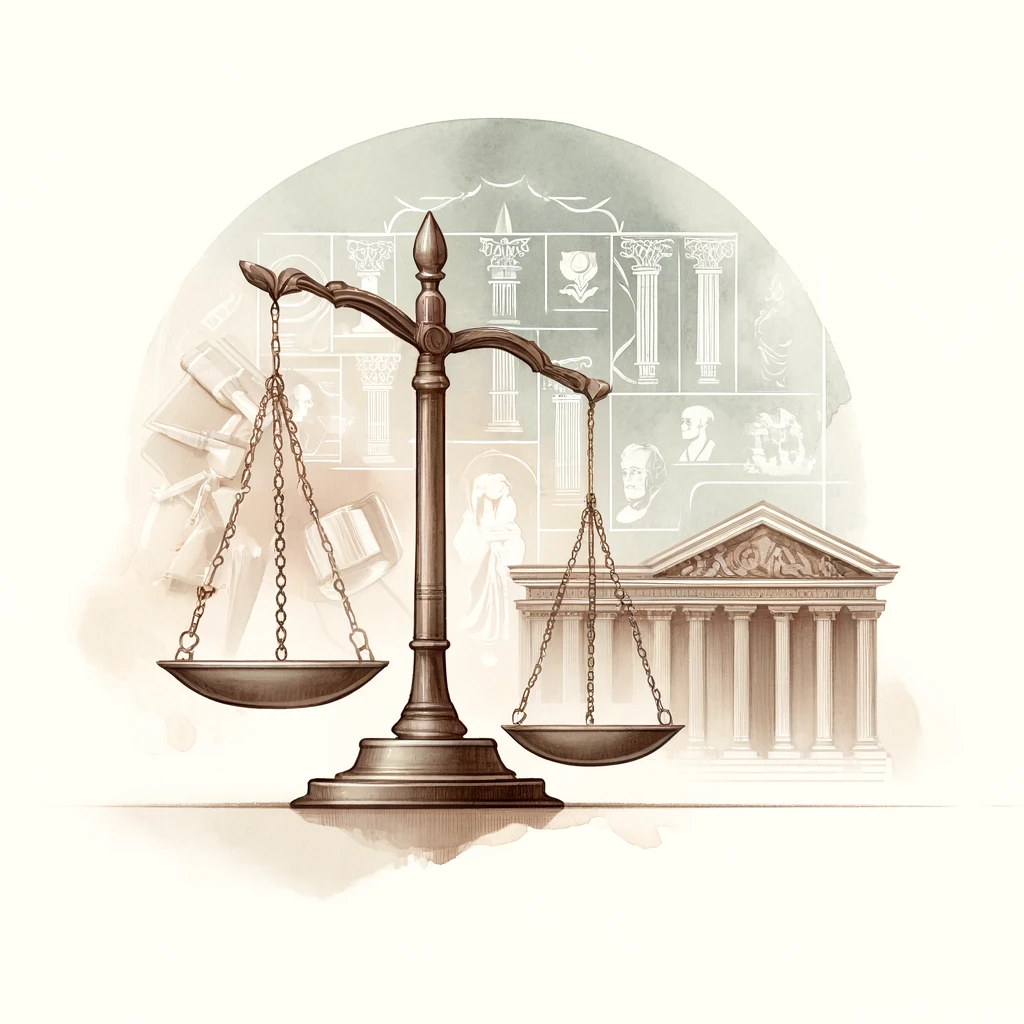Landmark Judgements and Interpretations
The doctrine of the basic structure is a cornerstone of Indian constitutional law, ensuring that certain fundamental features of the Constitution cannot be altered or destroyed by amendments. This article provides a detailed exploration of this doctrine, its origins, landmark cases, key elements, evolution, and the role of the judiciary in protecting it, along with the criticisms and debates surrounding it.

1. Introduction to Basic Structure Doctrine: Origin and Need
The doctrine of the basic structure emerged from the need to protect the core principles and values enshrined in the Indian Constitution from excessive amendments that could undermine its foundational ethos.
- Origin: The concept originated in the 1960s when the Supreme Court of India started questioning the extent of Parliament’s power to amend the Constitution, especially concerning the fundamental rights of citizens.
- Need: There was a growing concern that unrestricted amendment powers could lead to the erosion of essential democratic and constitutional values. This doctrine was seen as necessary to maintain the sanctity and integrity of the Constitution.
The basic structure doctrine ensures that the fundamental architecture of the Constitution remains inviolable, safeguarding democracy and the rule of law.

2. Kesavananda Bharati Case (1973): Establishment of the Doctrine
The landmark case of Kesavananda Bharati v. State of Kerala (1973) is pivotal in the establishment of the basic structure doctrine.
- Background: Swami Kesavananda Bharati, head of a religious mutt in Kerala, challenged the Kerala government’s attempts to impose restrictions on the mutt’s property under state land reform laws.
- Supreme Court’s Verdict: The case was heard by a 13-judge bench, which delivered a historic verdict. The court ruled that while Parliament has wide powers to amend the Constitution, it cannot alter the basic structure or framework of the Constitution.
- Key Takeaway: The judgment established that the Constitution’s fundamental features, such as the supremacy of the Constitution, the republican and democratic form of government, secularism, and separation of powers, constitute its basic structure and cannot be amended.
This case marked a turning point in constitutional law, setting the precedent that the basic structure of the Constitution is beyond the reach of parliamentary amendments.

3. Key Elements of Basic Structure: Examples from Judicial Pronouncements
The basic structure doctrine has been elucidated through various judicial pronouncements over the years, identifying several key elements that form its core.
- Supremacy of the Constitution: The Constitution is the supreme law of the land, and all laws and amendments must conform to it.
- Rule of Law: The principle that law governs the nation, and not arbitrary decisions by individuals in power.
- Separation of Powers: The division of governance among the executive, legislature, and judiciary, ensuring checks and balances.
- Judicial Review: The power of the judiciary to review and invalidate laws and amendments that violate the Constitution.
- Federalism: The division of powers between the central government and the states.
- Secularism: The state’s neutrality in religious matters, ensuring equal treatment of all religions.
These elements, among others, have been recognized by the judiciary as integral to the Constitution’s basic structure.
4. Evolution through Subsequent Cases: Minerva Mills, S.R. Bommai, and Others
The basic structure doctrine has evolved through various landmark cases post-Kesavananda Bharati.
- Minerva Mills Case (1980): The Supreme Court reaffirmed the basic structure doctrine, ruling that the power of judicial review is part of the basic structure. The case struck down amendments that sought to curtail judicial review and override fundamental rights.
- S.R. Bommai Case (1994): This case dealt with the misuse of Article 356 (President’s rule) and emphasized federalism and secularism as part of the basic structure. The court held that the dismissal of state governments was subject to judicial review.
- Other Notable Cases: Cases like Indira Gandhi v. Raj Narain (1975) and I.R. Coelho v. State of Tamil Nadu (2007) further expanded the doctrine, including democracy and the independence of the judiciary as essential features.
These cases collectively strengthened the doctrine, ensuring that critical constitutional principles remain protected.
5. Judicial Review and Basic Structure: Role of Judiciary in Protecting Constitution
The judiciary plays a crucial role in protecting the Constitution by exercising the power of judicial review.
- Guardian of the Constitution: The Supreme Court, as the custodian of the Constitution, ensures that any amendment or law that violates the basic structure is struck down.
- Check on Parliamentary Power: Judicial review acts as a check on the Parliament’s power to amend the Constitution, preventing any encroachment on fundamental rights and principles.
- Ensuring Constitutional Supremacy: Through judicial review, the judiciary maintains the supremacy of the Constitution, ensuring that all governmental actions comply with constitutional mandates.
This role underscores the judiciary’s responsibility to uphold the Constitution’s integrity and prevent its fundamental features from being compromised.
6. Criticism and Debates: Controversies and Opinions on the Doctrine
The basic structure doctrine, while widely accepted, has also faced criticism and sparked debates.
- Judicial Overreach: Critics argue that the doctrine gives the judiciary excessive power, allowing it to override the will of the Parliament, which represents the people.
- Ambiguity: The lack of a definitive list of what constitutes the basic structure leads to ambiguity and judicial subjectivity, potentially causing inconsistency in rulings.
- Democratic Concerns: Some contend that the doctrine undermines democracy by placing unelected judges above the elected representatives in Parliament.
Despite these criticisms, the doctrine is widely regarded as essential for protecting the Constitution’s core values and preventing the arbitrary use of amendment powers.
Conclusion
The doctrine of the basic structure is a fundamental aspect of Indian constitutional law, ensuring the preservation of the Constitution’s essential features. From its establishment in the Kesavananda Bharati case to its evolution through subsequent judgments, the doctrine has played a crucial role in safeguarding democracy, federalism, and the rule of law in India. For UPSC aspirants, understanding this doctrine is crucial as it highlights the dynamic interplay between the judiciary and the legislature in maintaining constitutional balance and integrity.


